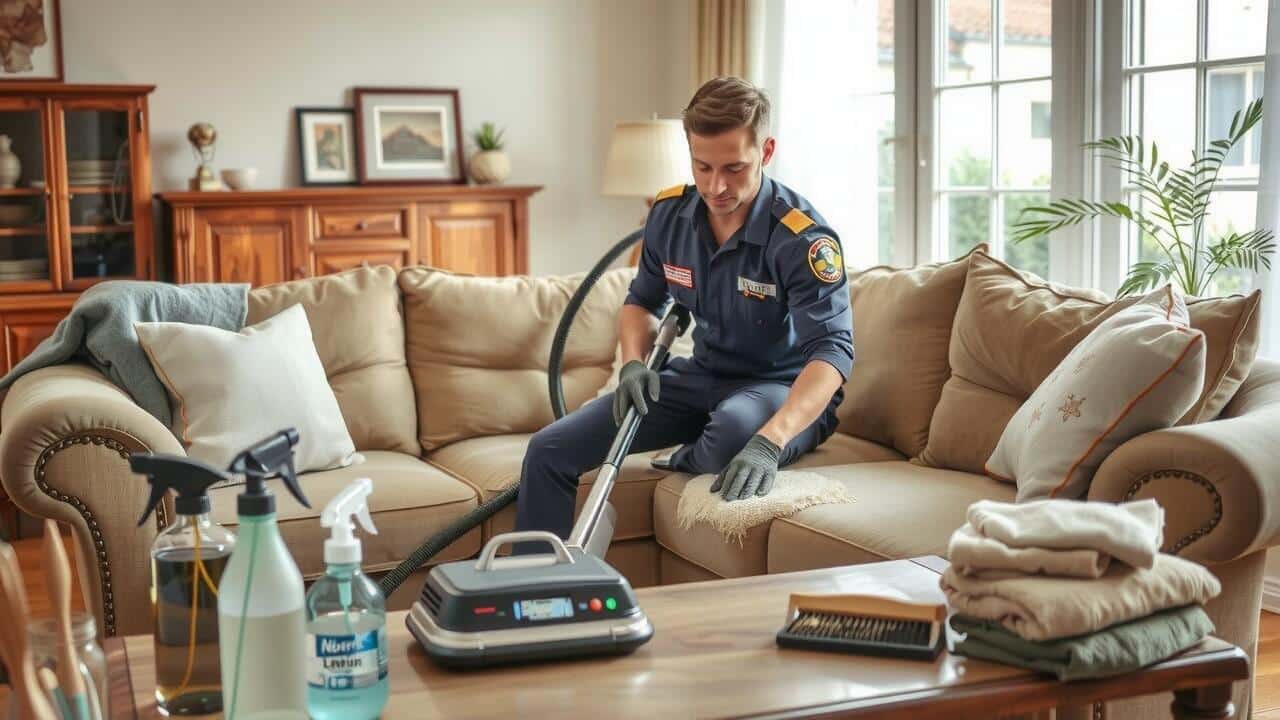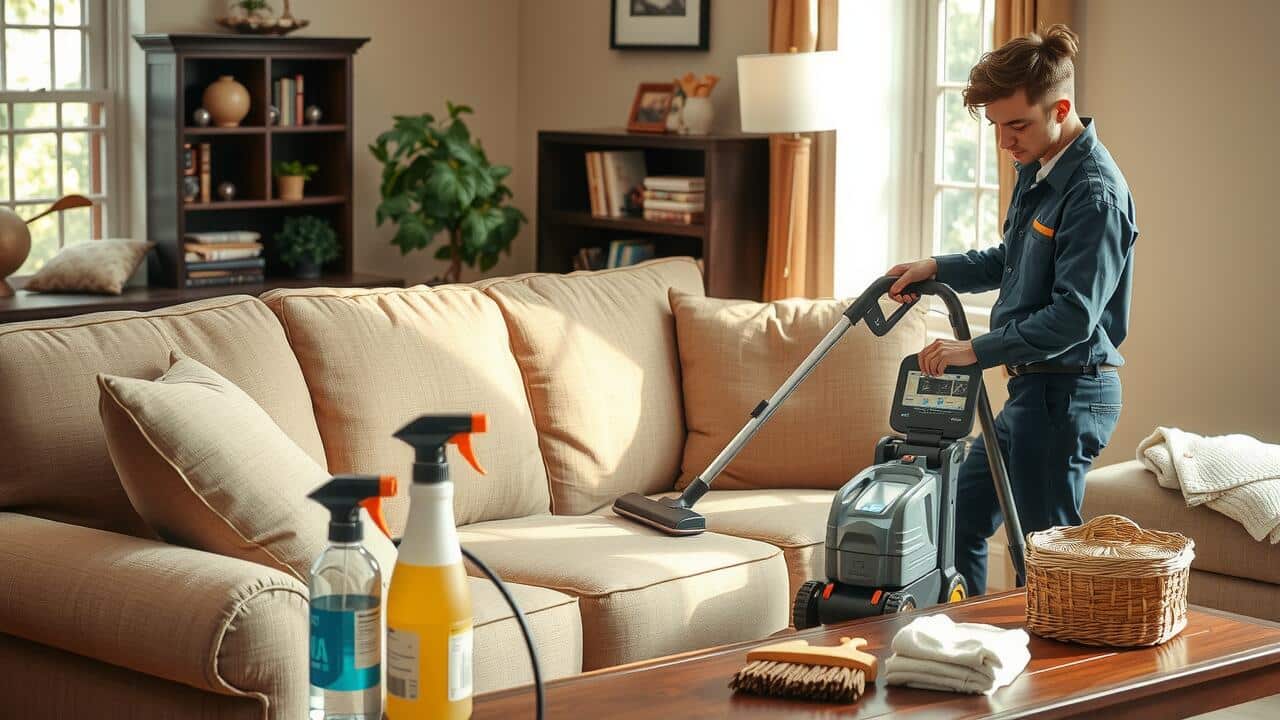
DIY Upholstery Cleaning vs. Professional Services
Many homeowners opt for DIY upholstery cleaning to save money and tackle the project on their own schedule. With the right supplies, such as a fabric cleaner, brush, and vacuum, it’s possible to refresh furniture without hiring a professional. This approach allows a person to learn about the materials and stains involved while also taking pride in a hands-on task. However, it can be time-consuming, and the results may not always match the quality achieved by experts.
On the other hand, professional upholstery cleaning services offer a thorough and often more efficient solution. Trained technicians use specialized equipment and cleaning agents tailored to various types of fabric and furniture, ensuring a deep clean that removes dirt, allergens, and stains effectively. While this option typically involves a higher upfront cost, the convenience and assurance of quality can justify the expense for many homeowners.
Cost Analysis of Each Option
When evaluating the costs associated with upholstery cleaning, it’s essential to consider both DIY efforts and professional services. Tackling the task yourself can be more economical upfront, as you may only need to purchase cleaning solutions and tools. However, this approach can involve a significant time investment. The results also depend heavily on your skill level and the condition of the upholstery.
On the other hand, hiring a professional upholstery cleaning service typically comes with a higher price tag, but the results are often noticeably better. Professionals have access to advanced equipment and specialized cleaning agents that are not easily available to the average consumer. This added expertise can lead to greater satisfaction and longer-lasting outcomes, which can potentially save you money on future maintenance.
Hidden Costs to Consider in Upholstery Cleaning
When considering upholstery cleaning, it is essential to be aware of potential hidden costs that can arise during the process. Initial quotes may not encompass all necessary services, leading to unexpected expenses. Factors such as the type of fabric, the extent of stains, and the need for specialized treatments can significantly impact the final bill. Homeowners should ask service providers for a comprehensive breakdown of costs before committing to ensure they understand what is included in the quoted price.
In addition to base fees, some companies may charge for extra services like deep cleaning or deodorizing. These add-ons can quickly escalate the overall expenditure. It is also common for additional travel fees to be applied if the service provider operates outside of a certain radius. Being informed about these potential costs before hiring an upholstery cleaning service can help consumers avoid surprises and allow for better budgeting.
Additional Fees and Charges
When considering upholstery cleaning services, it’s essential to be aware of potential additional fees that may arise. Many service providers offer base rates that cover standard cleaning but may charge extra for specific circumstances. These circumstances might include the size of the furniture, stubborn stains, or the type of fabric. Homeowners should inquire about these factors when requesting a quote to avoid unexpected costs after the service.
Another common source of additional charges in upholstery cleaning is the use of special treatments or products. Specialized stain removers, protectants, or deep-cleaning techniques often come at an extra cost. Additionally, clients may incur fees for travel if the service provider operates outside a designated service area. By discussing these details upfront, customers can gain a clearer understanding of the total potential expenses involved in their upholstery cleaning needs.
Finding the Right Upholstery Cleaner
Finding the right upholstery cleaner involves assessing a few key factors. Start by researching local services and looking for providers with solid reputations. Customer reviews can provide insight into their reliability and effectiveness. Additionally, it’s essential to verify that the cleaner uses appropriate methods and safe products for your specific upholstery material.
Consider obtaining quotes from multiple companies. This allows for a better understanding of standard pricing in your area. Don’t hesitate to ask questions about their cleaning processes and any warranties or guarantees they might offer. Clear communication can help ensure you choose an upholstery cleaning service that meets your expectations.
Tips for Evaluating Service Providers
When selecting a service provider for upholstery cleaning, it is essential to check their credentials and experience. Look for companies that are licensed and insured, as this indicates a level of professionalism and adherence to local regulations. Reading customer reviews can also provide insight into the quality of service you can expect. These testimonials often highlight strengths and weaknesses that could influence your decision.
Another important factor is the range of services offered. Some upholstery cleaning services may specialize in specific fabrics or types of stains, while others may provide more comprehensive care. Inquire about their cleaning methods to ensure they align with your needs, especially if you own delicate or vintage upholstery. Comparing quotes from multiple providers can help you gauge average costs and avoid overpaying.
FAQS
What is the average cost of professional upholstery cleaning?
The average cost of professional upholstery cleaning typically ranges from $50 to $150 per piece of furniture, depending on factors like the type of fabric, size of the item, and the service provider’s pricing structure.
Are there any hidden costs associated with upholstery cleaning?
Yes, hidden costs can include additional fees for stain removal, moving furniture, or extra charges for specialized treatments. It’s important to ask for a detailed estimate before services begin.
How does DIY upholstery cleaning compare to hiring a professional service?
DIY upholstery cleaning can save money and is often a good choice for minor stains and maintenance. However, professional services may be more effective for deep cleaning and tougher stains, and they possess specialized equipment and expertise.
What should I consider when choosing an upholstery cleaning service?
When selecting an upholstery cleaning service, consider factors such as customer reviews, the company’s experience, the types of cleaning methods they use, and whether they offer a satisfaction guarantee.
Can upholstery cleaning prices vary by location?
Yes, upholstery cleaning prices can vary significantly based on location, as cost of living and demand for services in different areas can influence pricing. It’s advisable to check local rates for more accurate estimates.
